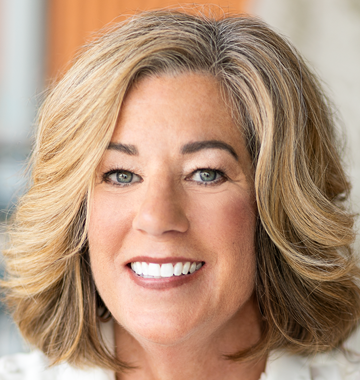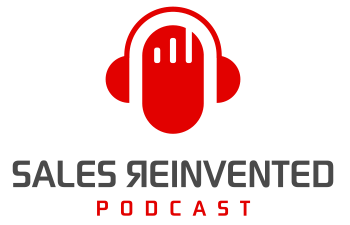Episode #398: Kristie Jones

Meet
Kristie Jones
B2B SaaS companies work with Kristie to help them build-out and improve their sales processes, outbound strategies, and to hire top talent because it’s hard to hit revenue targets set by VCs, the board, or even you if your pipeline is anemic and your sales team is under-performing.
Kristie is the author of “Selling Your Way IN”. She’s a speaker, coach, and sales consultant helping companies drive more revenue from their Sales and Customer Success teams.
She is known for her willingness to get her hands dirty and “take no prisoners” approach when helping companies drive more revenue.
Our Mission Is To Change The Negative Perception Of Sales People
Our Vision Is A World Where Selling Is A Profession To Be Proud Of
In its simplest sense, cold-calling is reaching out to someone by phone who may not know who you are. Is it still relevant in today’s sales world? According to Kristie Jones, yes, cold-calling still has a place. It still gives you the ability to create a human connection. But how do you master cold-calling? Kristie shares the art and science of cold-calling to kick off our newest series.
How Kristie prepares for cold-calling
Kristie doesn’t recommend doing a lot of research on individual people. However, she does make sure she does a good job of making sure they fit her ICP. She segments her lists so she calls healthcare companies, manufacturing companies, etc. all at the same time. She calls it doing “sprints.”
She’ll do two-week or 30-day sprints. This allows her to learn their vernacular and common objections. That way she doesn’t have to research individual companies but instead the industry as a whole (and the personas within it).
The most effective way to capture interest
The hardest part about cold-calling is that you’ll only get to talk to 3–5 people out of 100. Salespeople are always prepared to talk to a voicemail and far less prepared to talk to a human. You have to stay on your toes and be ready to talk to someone.
Getting through the first few seconds is an art. They’re crucial to whether or not you’ll be given more seconds. So how do you make that a reality?
Kristie sees humor work well. She worked with a group of SDRs that said something like “Hey Paul, Thanks for taking my call, I know you weren’t expecting it. How about it—would you like to roll the dice?”
The other tactic she sees work is respect. Recognize and acknowledge that you’re interrupting their day and that you won’t take up much of their time. You can say something like, “I’d really appreciate it if you could answer two or three questions right now so I can determine if we should connect at a later date.”
How to keep a cold call engaging
Kristie organizes her calls in a specific format. She scripts the opening line to make it intriguing. The “middle” section isn’t scripted. However, she does list out questions they need answers to. Once she has those answers, she moves into a transition statement.
She’ll say, “Thanks so much for answering those questions. I promised I’d keep this short. Based on what you’ve shared with me, I think we should have another call…” Or “I don’t think this is the right time for us to have a call, and here’s why…”
What are Kristie’s top cold-calling dos and don’ts? Listen to learn more!
How Kristie overcomes cold-calling objections
Kristie handles objections by asking questions to seek to better understand. You want to make sure the objection is what they say it is. So Kristie will ask a “how” or “what” question to dig deeper and understand the issue.
Kristie once had a prospect return a voicemail. Kristie didn’t think he was a good fit for what they were offering (his team was too small without the formal systems and processes necessary). When she said “I don’t think you’re ready for us,” he said, “What are you talking about? I’m trying to buy your product.” She talked him out of buying their product.
He reached out a year later. He’d never had anyone tell him they wouldn’t sell him something. She made an impression that he couldn’t forget. So when he was ready, he reconnected.
Remember—It’s your responsibility and job to qualify people. Not everyone will be a good fit at the moment. But you need a nurture strategy so that when it is a fit, you’re the first call.
Connect With Paul Watts
Audio Production and Show notes by
PODCAST FAST TRACK
https://www.podcastfasttrack.com
Learn More About Kristie Jones
What was a pivotal moment or experience in your career that shaped your approach to cold calling, and how did it change your perspective or strategy?
As the SDR manager at Gainsight in the early days, I sat all day and heard my team say “Gainsight – G A I N S I G H T.” Customer Success was a new job role and unless you were on the coasts you probably hadn’t heard of it. We changed our prospecting strategy to include a bit of education and followed up our calls with more information about Customer Success to help those in the middle of the country get up to speed with the new sales role.
Can you share a specific tactic or approach you’ve used in cold calling that significantly increased your success rate? Please provide a brief example or case study.
I had the BDRs open with this line. “Hi Paul, This is Kristie from Sales Acceleration Group. Thank you for answering, I know you weren’t expecting my call. Would you like to roll the dice or hang up?” The rate of those willing to speak with the team increased 2x.
Cold calling often comes with its set of challenges and rejections. Can you share a particularly tough challenge you faced while cold calling and how you overcame it?
The connect rate in the past few years has dropped dramatically. As a result, I still have the team make cold prospecting calls, but I ask them to personalize them in some way and follow them up with an email with the Subject line: VM follow-up to help with the same information. Successful outbound prospecting doesn’t include just one method. It’s the combination of calls, emails, videos, and social that will help break through the noise.
What are the top three tools or resources (e.g., software, books, training programs) you consider essential for someone looking to improve their cold calling skills and outcomes?
- Local Presence
- Power dialer
- A good research tool
How do you foresee the practice of cold calling evolving in the next few years with advancements in technology and changes in buyer behavior? What advice would you give to sales professionals to stay ahead of the curve?
I don’t believe that cold calling is dead or will die. People buy from people. I do think that we’ll have to shift to a more buyer’s journey-centric approach. Buyers are more educated than ever before and the don’t want to engage a sales professional until they are further along in the buyer’s journey. This means that marketing will become a much more important part of revenue generation.
Share This Episode, Choose Your Platform!
